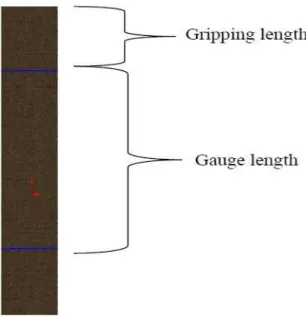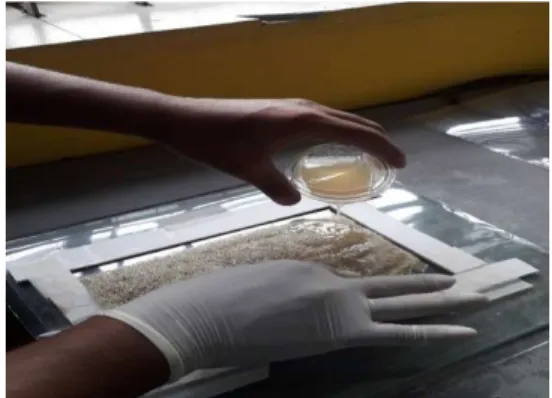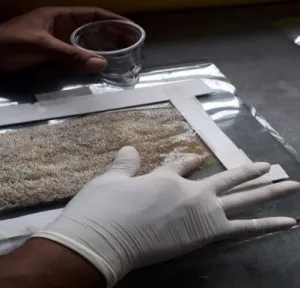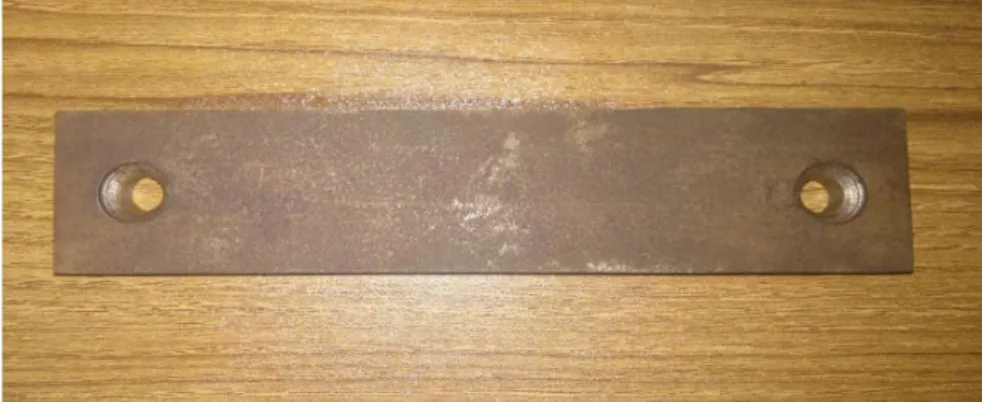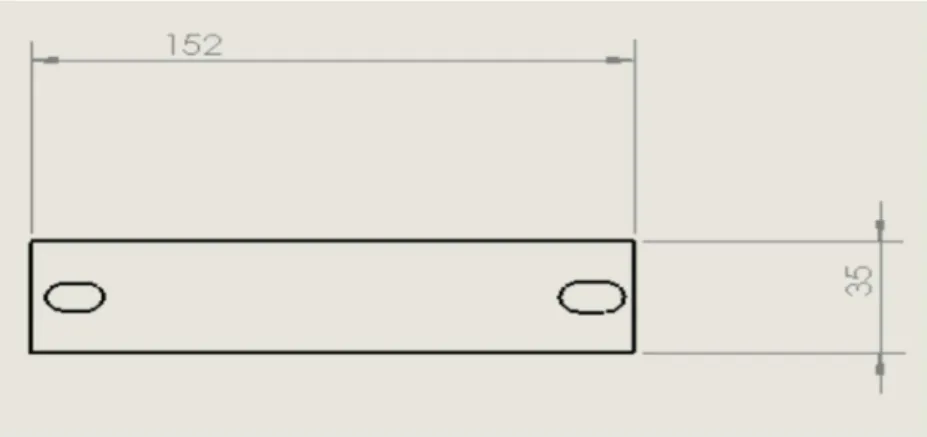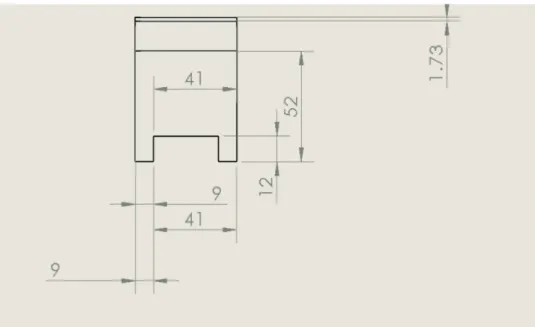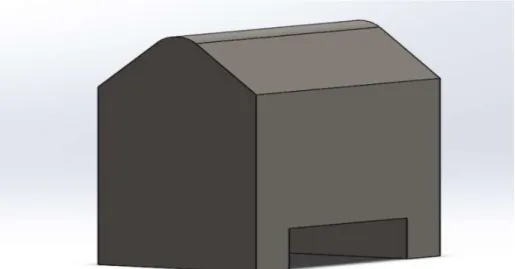The thesis entitled "Comparative study of mechanical properties between jute fiber composite and luffa fiber composite" submitted by the following students has been accepted for partial fulfillment of the requirement for the degree of B.Sc. Among these different laminar series, Luffa fiber composite holds the highest amount of flexural strength, 50.63 MPa and Jute fiber composite highest amount of elasticity modulus, 3.82 GPa. 26.986 MPa was found on Jute composite material and maximum young's modulus viz. 94 was on Jute fiber composite material.
CHAPTER 8
RECOMMENDATIONS
CHAPTER 9
CONCLUSIONS
LIST OF TABLES
INTRODUCTION
- GENERAL
- OBJECTIVES
- BACKGROUND THEORY .1 COMPOSITE
- TYPES OF COMPOSITE
- FIBER
- Resin Used
- HARDENER (M.E.K.P)
Luffa fiber is also a natural fiber like jute fiber and is also environmentally friendly. Natural fibers such as bamboo fibers or jute fibers also come with a disadvantage of high water uptake due to the presence of hydroxyl and other polar groups in various components of natural fibers. Availability and production through recycling of plant materials are the advantages of natural fibers [10].
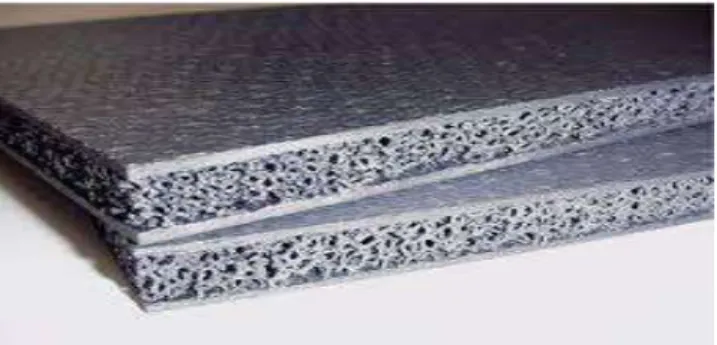
LITERATURE REVIEW
- JUTE FIBER
- JUTE FIBER COMPOSITE
- Luffa Fiber
- THREE POINT BENDING TEST
- TENSILE TEST
In SolidWorks, a three-point bend test module has been designed to perform bend testing of the samples in our UTM machine. Because there is no three-point bend testing machine available for the desired shape of the composite sample to test the three-point bend, the. In a three-point bend test, the outer rolls were spaced 64 mm apart and the samples were tested at a strain rate of 0.2 mm/min.
A three-point bending test was chosen because it requires less material for each test and eliminates the need to accurately determine center point deflections with test equipment. The tensile test is also known as a tension test, which is one of the most basic and common types of mechanical tests. A tensile test applies tensile force to a material and measures the sample's response to maximum stress.
Tensile testing is done to determine the effectiveness and behavior of a material when an expansion force is applied to it. The tensile test is done to know the strength of a material for what this property of the material will be widely used to ensure safety, high quality material and avoid major liabilities associated with providing non-conforming products. Because Young's Modulus evaluates the elasticity of a material, which is the relationship between the deformation of a material and the force required to deform it.
Each of the samples used for tensile testing was between 150 and 160 mm in length, which was above the minimum length required.
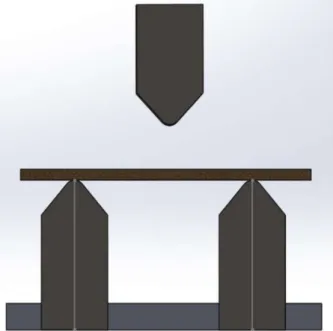
FABRICATION PROCESS
Fabrication of the composite materials
Page | 17 Step-3: To make composite materials, glass of 10 mm thickness was first placed on a flat surface. Step-5: Fiber and Matrix with a weight ratio of 20:80 (we will only use this ratio throughout the study) was taken. Step-6: Weight of the fiber and resin was measured using measuring device.
Step-7: A good amount of matrix compound was put on the transparent paper before the fiber was placed. Step-8: Jute or Luffa fiber was placed on the transparent paper and again a good amount of mixture was placed on top of the jute or Luffa mat fiber. Page | 18 Step-9: A cylindrical plastic roller was used to spread the matrix evenly on the surface of the fiber.
In this way the fiber can receive the matrix mixture evenly over its entire surface. Step-10: Then step 6 and 7 was repeated for the next layer and this will continue until all the layers are placed on top of each other. Step-11: After the final rolling action, another transparent paper was placed over the jute or Luffa fiber.
Step-13: Finally a good amount of weight (say 2-3 kg) was placed and kept in room temperature for 24 hours.
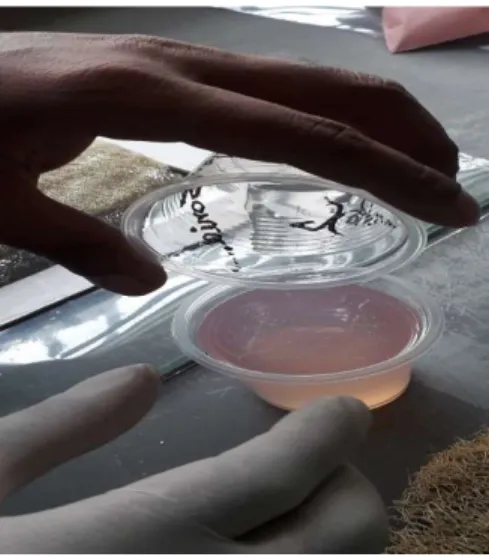
METHODOLOGY
- DESIGN & CONSTRUCTION
- Three Point Bending Test Machine used
- Tensile Test
- TESTING PROCEDURE
- Setup the flexural strength testing module
- Setup the tensile testing module
A base has been designed using SolidWorks software so that it can hold the other parts of the module in a specific place without additional modifications to the UTM machine. To design the base, the dimensions of the pressure compartment of the UTM machine were first measured. Because the maximum height of the compartment was 270 mm, the thickness of the bottom was primarily set at 12 mm.
Several problems were encountered after completing the base with a length of 152 mm, width of 50 mm and thickness of 10 mm. Due to the slight change of the final design of the column, the width of the base has been changed. Capsule hole was made 10 mm from the edge of the and with a radius of 8 mm.
The column height has been changed from 40+16mm to 40+16+12mm (12mm is equal to the thickness of the base that will hold the columns and recesses). A screw was placed on the head of the 8 mm diameter indenter so that it could be used to screw the indenter to the upper side of the compression chamber of the UTM machine. The column is adjusted according to the length of the span of the standard according to the user's requirements.
The other end of the sensor is attached to the head of the compressive compartment of the UTM with another custom screw.
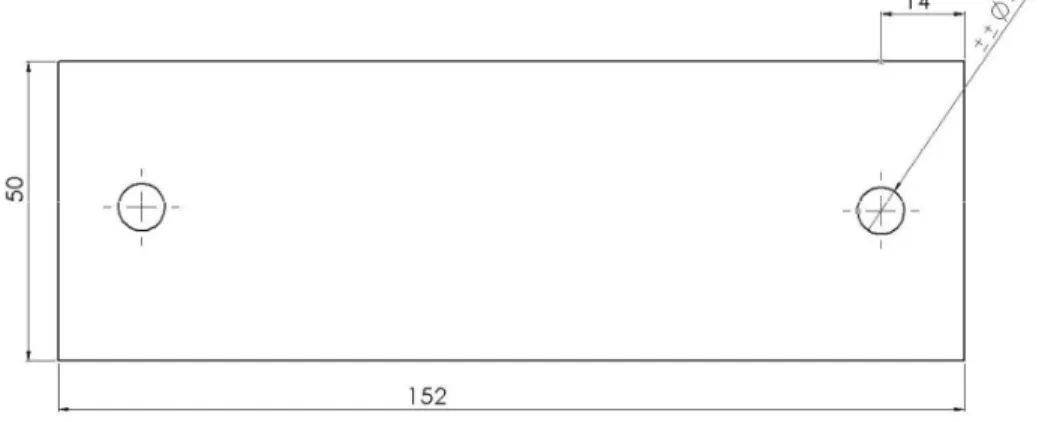
CALCULATION AND ANALYSIS
SAMPLE INFORMATION
VOLUME FRACTION AND DIMENSION
MECHANICAL PROPERTIES
- TENSILE TEST
- TENSILE TEST CALCUATIONS
- Experimental Data Table for Tensile Strength
- Flexural Testing
- Theory of Flexural strength
- Theory of modulus of elasticity
- Flexural Strength Calculation (σ)
- Calculation for modulus of elasticity (E)
- Experimental Data Table for flexural Strength
Page | 36 test is commonly used to select a material for an application, for quality control, and to predict how a material will react under other types of forces. Properties measured directly by means of a tensile test are ultimate tensile strength, maximum elongation and reduction in area. The most common testing machine used in tensile and flexural testing is the Universal Testing Machine.
This type of machine has two crossheads; one is adjusted to the length of the sample and the other is driven to apply tension to the test sample. From the UTM machine, we got the lengthening of the test piece with the increase of the tensile force. Sometimes referred to as a cross beam test, where a sample is placed between two points or supports and a load is initiated using a third point or with two points called 3 point bend and 4 point bend test respectively.
In this study, we will conduct a 3-point bending test to determine the flexural strength and modulus of elasticity of our fabricated composite materials. In order to find the flexural strength and modulus of elasticity, two different types of equations must be used. Flexural strength, also known as modulus of rupture, flexural strength, or transverse tensile strength, is a material property defined as the stress in a material just before it yields in a bending test.
The most commonly used transverse bend test is to bend a sample with a circular or rectangular cross-section until it breaks or yields using a three-point bend testing technique.
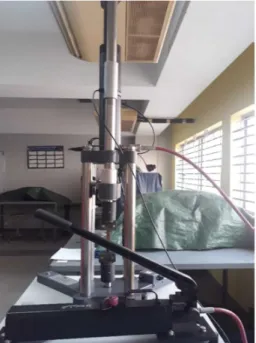
RESULTS AND DISCUSSION
TENSILE TEST
- Comparison of Ultimate Stress
- Comparison of Young’s Modulus
In the study, two types of composite materials were produced in order to perform a tensile test and compare their Young's modulus data. From the bar chart above, it is clear that the Luffa fiber composite material has a higher Young's Modulus than the Jute fiber composite material. That being said, if the operation requires a material that can be easily stretched with light weight, it is recommended to take Luffa fiber composite instead of Jute fiber composite.
FLEXURAL TEST (3-POINT BENDING) RESULTS
- Comparison of Flexural Strength
- Comparison of Modulus of Elasticity
Among these four types, Luffa fiber composite material has the highest bending strength. Since only one piece of J/J was tested, it was also difficult to determine the exact flexural modulus with this scenario. It should be noted that flexural strength refers to a material, how much force it can withstand before it begins to break.
In terms of definition, it can be said to be the amount of force an object can endure without breaking or deforming permanently. Of these four types, jute fiber composite material has the highest modulus of elasticity. Since the span was too low during testing of J+J composite, the J/J started to hit the column after a short test, which also added to the flexural strength.
Also, since only one piece of J/J was tested, it was difficult to determine the exact flexural modulus with this scenario.
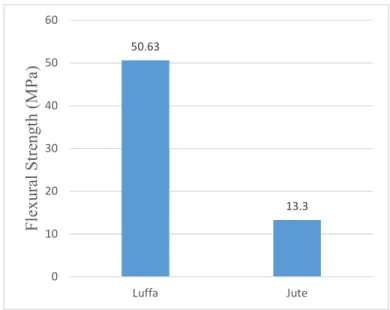
USES AND APPLICATIONS
- APPLICATIONS
- Aircraft
- Automobile
- Wind Turbine
- Civil Construction
- Marine
- Electronics
- Sports Equipment
- Power Transmission
- Oil and Gas Industry
- Medical Sector
- Defense
- Possible application of jute fiber composite
- RECOMMENDATIONS
- CONCLUSIONS
- CONCLUSIONS
There are many sports materials made of composite material, such as tennis rackets, badminton rackets, softball bats, basketball backboards, ski poles, ice hockey sticks, high jump items, etc. Composite materials are used because of their light weight and high strength. , high design and freedom of form. Fiber-reinforced polymer composites have been widely used in the oil and gas industry for several decades.
In the piping system, glass fiber reinforced polymer (GFRP) composites are used for the offshore environment against highly corrosive fluids at pressures, temperatures, adverse soils and weather conditions. Another reason lies behind the use of glass fiber reinforced polymer composites, which is low cost and high strength than metal pipe. The mechanical properties of bone repair materials, often a self-healing acrylic, can be improved by the addition of carbon fibers.
Some medical testing devices are also made from composite materials due to their light weight, high stiffness and biocompatibility. In the defense sector, many weapons, naval ships of military aircraft, bullet jackets are made of fiber reinforced polymer composites. In this field, the importance of fiber reinforced polymer composite material is increasing day by day.
This work can be further extended to study other tribological aspects such as abrasion, wear, hardness behavior of this composite.
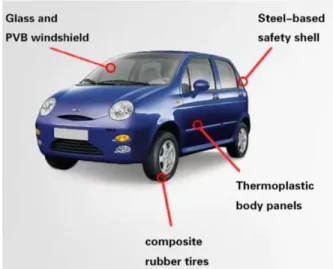
Prediction of swelling behavior of jute and banana fiber composites using ANN and Regression Analysis. Ratna Prasad, Fabrication and composite testing of natural fibers: Vakka, sisal, bamboo and banana, Journal of Materials and Design. Mansour Rokbi, Hocine Osmani, Abdellatif Imad, Noureddine Benseddiq, Effect of chemical treatment on flexural properties of natural fiber reinforced polyester composite, Composite Science Technology.
Mekaniske egenskaber af Luffa Fiber og Ground Nut Armed Epoxy Polymer Hybrid Composite, procedurer fra den 12. Global Congress on Manufacturing and Management, GCMM 2014. Lassaad Ghali , Slah Msahli , Mondher Zidi , Faouzi Saklicture, Effects of Fiber Strification Ra and Fiber på Flexural Properties of Luffa-Polyester Composites' Journal of Advances in Materials Physics and Chemistry.
